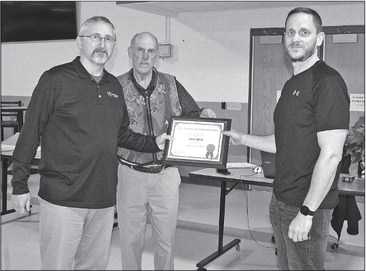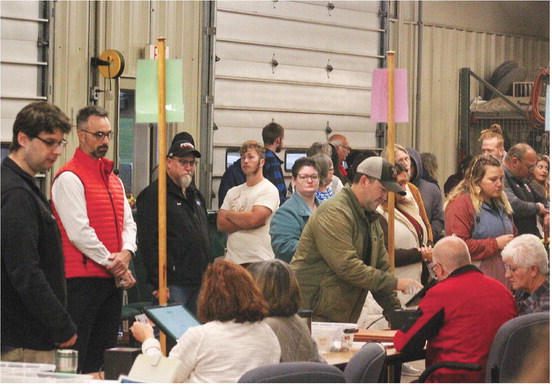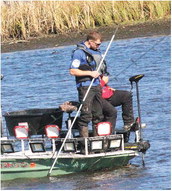Abby OKs next step for pool


By Ross Pattermann
For nearly 50 years, residents and students in the Abbotsford School District have enjoyed the district’s pool.
But the future of that pool is up in the air after maintenance supervisor Mason Rachu informed the board in November that the pool was leaking and the 46-yearold facility needed repairs.
The full extent of the repairs — and the cost to the district — was unknown at that time. The board’s facilities committee authorized Rachu to contact experts to assess the damage and report the findings, which he did at the board meeting on Monday Joining Rachu on video conference was Daryl Matzke, an engineer with Ramaker & Associates out of Sauk City Matzke informed the board of the damage based on a survey of the natatorium and the needed repairs. Matzke said that the pool basin appears to be structurally sound, and the one crack has been grouted over with no damage to the reinforced steel.
“That brings up the issue — what is the concern with the pool?” Matzke said. “The concern with the pool is the original construction used cast iron piping. This pool has 40 plus years on it, and the piping has rotted away in a number of places to where a significant volume of water is leaking away” Matzke said the district will need to saw off the concrete pool basin floor and the top of the pool wall to construct a new gutter system.
“But, given how structurally sound the pool basin appears, this is very achievable work,” he said. “Yes, it’s a major project, but in comparison to building a brand new pool, it is much easier to work with a pool that is structurally sound and do repairs on it as opposed to demolishing and staring from new.”
Matzke also said the district will need to make changes to its diving board, and would have to drop the height of the board for recreational use, but not for diving competitions.
Interestingly enough, Rachu said that
See POOL/ Page 9 Abbotsford’s pool could, in fact, host WIAA swimming competitions, and is actually more equipped to handle those events, since the swimming lanes are seven feet, as opposed to the six feet lanes in Colby’s pool.
However, if Abbosford were to host swim meets, the cost of touch pads, a timing system and wall clock would run the district an additional $47,000.
The repairs to the pool were estimated to be under one million dollars — and more likely to cost around $700,000.
In order to gain more insight on the best path forward, the district issued a survey to gauge public support.
Of the nearly 100 surveys that were filled out, superintendent Sherry Baker said respondents expressed overwhelming support for repairing the pool, with over 90 percent of having use the pool at one time or another.
“I walked away from that community survey, as small as it was, feeling very heartened that people want to see their pool repaired,” she said. “I would say we have overwhelming support to not only fix the pool, but to do the right updates.”
Armed with public support, an understanding of the extent of repairs and a very rough estimate of $700,000, the next question for the board to debate was how to pay for the repairs.
Baker noted that some community members had wondered if the money from the FEMA grant could be used for the pool, but she quickly squashed that notion. While both are construction projects, the FEMA grant is only for creating a storm shelter/multi-purpose dome for the community, she said.
The board discussed two options at length: either pursuing a loan, since interest rates are around three percent, or holding a possible referendum in the spring.
Board member Shanna Hackel was not in favor of a referendum, especially in light of the financial hardships families are facing due to the ongoing coronavirus pandemic.
“I just think that right now going to a referendum is just not a good situation for a lot of people, especially in our area,” Hackel said. “There’s just a lot of heartache and people struggling. I truly feel now is not the time.”
Baker did note that some of the money from the district’s Fund 46 account could be used to pay for some of the repairs once it becomes available in July of 2021.
“We’ve been saving money in Fund 46. We could do the minimal to get the dome up. What you could do is take some of that money, about $200,000, and apply it towards that pool cost,” she said. “Now you just lower [the loan] to $500,000. You’d still have your dome, you’d still have your structure, it’d just be a shell.”
If the district used that money, the shelter’s interior would likely sit empty until funds became available to construct new classrooms and possibly a stage for theatrical and music productions.
Hackel was hopeful that the district would not need to go that route, and that the pool would attract donations from committed residents, local businesses and alumni, and that the district could pursue a loan to make up the difference.
“I look at certain families that had kids go through swimming and I can see families and business pitching in,” she said.
After a vigorous debate, and with the public supporting the repairs, the board settled upon the decision to pursue a 10year loan not to exceed $700,000.


